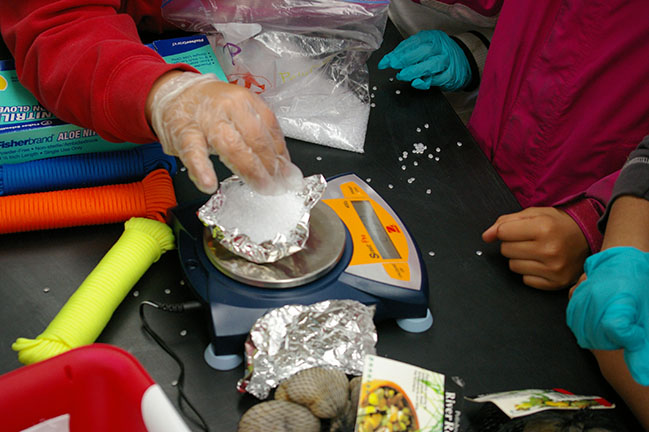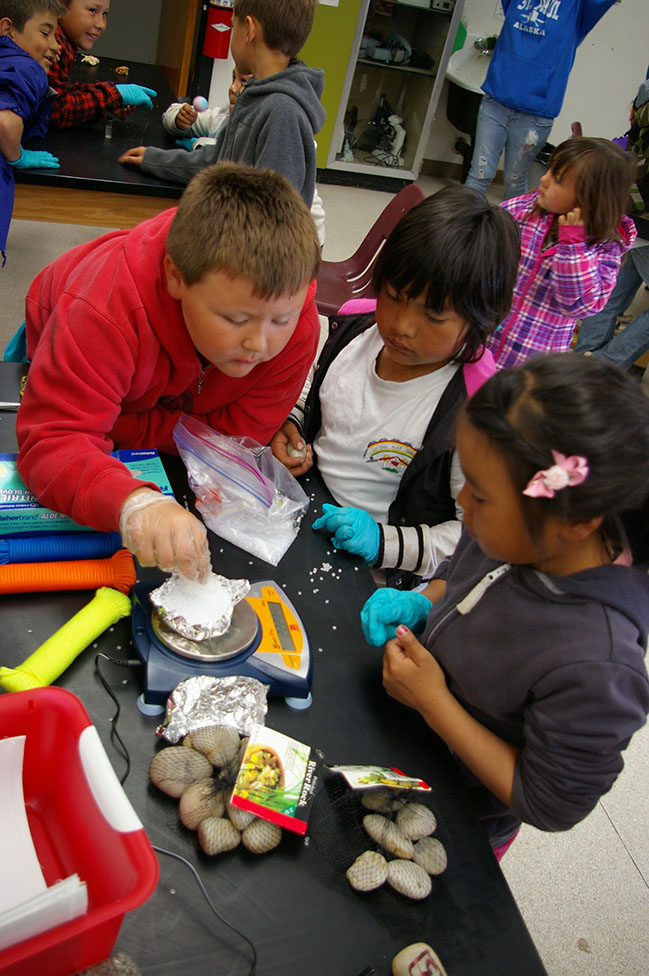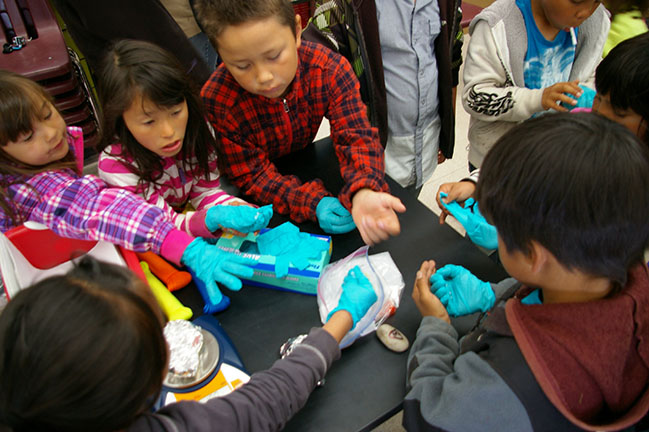Students attending Seabird Camp set-up a plastic pellet experiment. Trevor Haynes explains more…
University of Alaska Scientist Veronica Padula had a challenge for the seabird camp students – Set up a scientific experiment in their harbor. Veronica’s research focus is on marine debris, specifically the plastics that enter the marine ecosystem and how they affect the marine community. Considering St. Paul is home to such a rich abundance of marine life and home to such a great collection of eager students, it is a perfect location to set up such a research project!
Veronica called into the classroom at the end of the day on Wednesday as a surprise Skype visitor. Some students recognized her from her previous interactions with her dissecting seabirds to look for plastics. Others met her for the first time. Veronica told us all another danger of marine debris – plastics in the marine environment can “soak up” harmful organic pollutants that are in the water. Of course, this can be harmful to seabirds and other marine life, especially if they ingest the plastics, which we had already learned that they commonly do. She also asked if students were interested in helping her set up a science experiment in their harbor. The students replied with an emphatic “yes”! Her idea is to put samples of different plastics into the St. Paul harbor and retrieve these samples after few months to see what pollutants have accumulated. She asked for the student’s assistance in setting this experiment up.
On Thursday we started camp by weighing out different plastic types. We set up two tables with electronic scales and students weighed out different plastics placed them in cotton bags. Students were very careful as they weighed out 20 grams of each plastic sample and noted the different shape and color of the plastic types (which might change through time!). Older students marked the bags with permanent marker and also labeled rocks which were placed inside the bags to weigh them down. We then all walked down to the harbor. Trevor worked on attaching the bags together while some students worked on attaching the bags to the North dock (they needed to be very secure!). In the end, we think the experiment is set and now we will wait to see what happens.

Veronica is planning on coming to St. Paul during Bering Sea Days in October to follow up with the experiment. At that point, she will get to interact with the students, update them on her research and collect the pellets to send off for chemical analysis. The results of this analysis will inform the students and the people of St. Paul what types of organic pollutants reside in their harbor and will be a part of Veronica’s primary scientific research for her PhD. Learn more about the pellet experiment here


